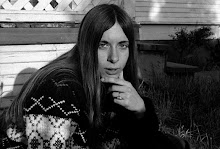
I'm talking about candy cigs. Do you remember them? It was so cool to walk around with one in your mouth and pretend you were puffing on it just like your parents did when they smoked. How swell it would have been if they found a way to have a smoke like substance come out the end. They came in these neat little boxes that looked real. I could carry them in my Barbie purse along with my candy lipstick and pretend I was a big girl. My God! Who thought of that and what were they thinking? Be brave, then, and buy a bubble gum cigar.
Penny candy. That was part of our culture. Every Friday my dad would come home from work with 2 little brown bags full of the stuff for my sister and I. What a treat to dig through it and see the sweet little treasures.
You could always tell what kind your friends were eating by the color of their mouth, lips, or tongue. Blue meant Spudnik gum. Red were the fireball jawbreakers and black pieces in your teeth were the licorice pinwheels. Any color could be the sippy sticks and yellow pieces in your teeth were the banana b-b bats.
I loved the candy beads. Think about it, love beads at age 5. They came on an elastic string and your neck ended up being stained in an array of psychedelic colors from sucking on them. Top it off with pumpkin seeds with an inch of salt encrusted on each one and a marshmallow ice cream cone.
Wax lips were the rage because after they were in you mouth too long and you started gaging, you could just eat the stuff. It amazes me we all didn't die at a young age from being plugged up with wax, artificial flavors and gum.
How about nip wax bottles with juice in them. Juice? I am sure that the flying saucers were made with the same stuff communion wafers were but only different colors.
Mmmm...Necco wafers,(the chocolate ones) candy buttons on paper, Bazooka bubble gum and fizzies. Boston baked beans, jawbreakers and neopolitan candy slices. DumDum suckers (why are they called DumDum?) and Tootsie pops. They are the ones that ripped the skin off of the roof of your mouth when you tried to bite into the Tootsie Roll.
Just think about it. These precious gems basically only cost 1 penny apiece. You could get 100 pieces of candy for a dollar and have a candy buffet. It might look like a deal, but when it was all said and done, $1.00 for candy, $50.00 for the dentist and $100.00 to have your kids stomach pumped. Not a good investment afterall!

















